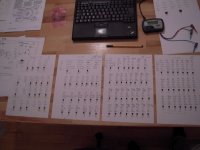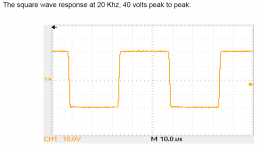Well (this time) followed the guide: https://diyaudiostore.com/pages/jfet-matching-informationHow did you do that?
and yes mine are 80 +
I buy from mouser and however many it takes to get discount so usually 100
then sort onto tape and retest before using.
looking for the closest match I have. No extraordinary effort.
( my projects have all signed a DNR)
same to setup a CCS, test with resistor and 10R or 100R to read current
with voltage approximately like in the circuit
And No I really don't know what I'm doing, but many here do
It sounds like you're at least where I am. I also use 10R and 100R, switching between them for high or low current. But that's another thing: Accurate measurement of Vp if you define it as DS does, at 1uA or less. Just have to WAG it close and pick some other points to match 'em, as per ZM.
tl;dr Buy a bunch of legacy parts for CCS. For LTP, save yourself frustration and tedium while going higher performance by spending just a few extra $ for LSK389 or JFE2140. Solves everything.
tl;dr Buy a bunch of legacy parts for CCS. For LTP, save yourself frustration and tedium while going higher performance by spending just a few extra $ for LSK389 or JFE2140. Solves everything.
BTW, I changed to having a separate variable -10V supply to the gate, instead of degeneration R. Makes it simpler without the FB effect and keeps Vds more constant.
Hello out there,
if you want to use J113 -JFets in a LTP, you should match them pretty well. This means a lot of work and searching.
I have tested 100. The J113 spread pretty wide in their values. But they are cheap. I think Nelson Pass has tested thousands...
You could use also TI JFE2140 (SOIC8) or the LSK389 / LSK489 (SOT-23/ TO-71/ SOIC8). But you will have to make your own boards/ adapters for the different footprints.
Cheers
Dirk
if you want to use J113 -JFets in a LTP, you should match them pretty well. This means a lot of work and searching.
I have tested 100. The J113 spread pretty wide in their values. But they are cheap. I think Nelson Pass has tested thousands...
You could use also TI JFE2140 (SOIC8) or the LSK389 / LSK489 (SOT-23/ TO-71/ SOIC8). But you will have to make your own boards/ adapters for the different footprints.
Cheers
Dirk
Attachments
I was just comparing my J113 data (among only 5, so far) to JFE2140 for apples-to-apples. The best pair among my (5) J113 match within 8-20mV of Vgs, when tested at 4 currents: 10,5,3, & 1mA. JFE2140 spec is 4mV (max) at 2mA Id, and typically 1-3mV up to 10mA Id.
How much this matters, IDK.
How much this matters, IDK.
Aside from the preference to keep cost low, isn't this LTP architecture begging for a dual from Linear Systems?
(And couldn't the same be said of Q1 &2 from Waynes BA 2018 Preamp?)
(And couldn't the same be said of Q1 &2 from Waynes BA 2018 Preamp?)
The Duals from Linear systems are great devices. Never tried the pretty new TI JFE2140.
Buying such a lot of J113 doesn't make it 'dirt' cheap. A LSK389 and the LSK489 cost a bit more then 10 bucks a piece in Germany -
and they are difficult to get.
When the DIYAudio-shop will offer this board plus matched J113 at a price around 10 dollars - also at 20 dollars -
this would be cheap.
Cheers
Dirk
Buying such a lot of J113 doesn't make it 'dirt' cheap. A LSK389 and the LSK489 cost a bit more then 10 bucks a piece in Germany -
and they are difficult to get.
When the DIYAudio-shop will offer this board plus matched J113 at a price around 10 dollars - also at 20 dollars -
this would be cheap.
Cheers
Dirk
That was sort of my point; maybe I already have one pr. of J113 matched good enough and the other 3 can be used for CCS and thus not wasted. Then I do that for the other channel and I'm done, from the mere $3.59 paid. But also maybe it's only a few bucks more to step up. How much $ we're trying to save vs. actual performance differences are still debatable.
It would be awesome if someone with the expertise & charitable state of mind could bless a revision and offer pcb options for the duals. Whilst I have hesitated to solder the smaller packages, using these closely correlated parts seems like a logical solution.
Disclaimer:
I acknowledge that this is a hobby and that those supporting & catering to the less able/informed do so an act of charity. I appreciate their actions.
@cubicincher - LSK might send you samples if asked.
Disclaimer:
I acknowledge that this is a hobby and that those supporting & catering to the less able/informed do so an act of charity. I appreciate their actions.
@cubicincher - LSK might send you samples if asked.
I guess ZM might say this:
1) Build amp with TO-92 sockets for LTP and (maybe to accommodate SO8 adapter socket, etc. for alternate pair)
2) For the following LTP parts compare THD and CM rejection: poorly matched J113, better matched J113, LSK389, JFE2140, etc.
It's taken me awhile to get just to here, so I won't have a whole FE soldered up for a bit longer.
1) Build amp with TO-92 sockets for LTP and (maybe to accommodate SO8 adapter socket, etc. for alternate pair)
2) For the following LTP parts compare THD and CM rejection: poorly matched J113, better matched J113, LSK389, JFE2140, etc.
It's taken me awhile to get just to here, so I won't have a whole FE soldered up for a bit longer.
If anyone provides a circuit design, board layout, and bill of materials for a power amp front end capable of 20dB gain, offering balanced or unbalanced inputs, operates from ±30 volt power supplies, with slew rate of >30 volts per microsecond, that does not require hand-testing and/or matching devices, and is lower cost than Nelson's -- even in Europe -- , I am sure many members would be very pleased.
Where did I get "slew rate > 30V/usec" ? From page 4 of Nelson's pdf:
_
Where did I get "slew rate > 30V/usec" ? From page 4 of Nelson's pdf:
_
Attachments
@Mark Johnson
My comment and Cubicincher's follow-on were I think a delayed response to your Post #263. And as we both noted we are grateful for the charitable donations of others. I would be the first to note that I do not contribute. More a case of `background noise' but coincidentally it is afternoon nap time here too
My comment and Cubicincher's follow-on were I think a delayed response to your Post #263. And as we both noted we are grateful for the charitable donations of others. I would be the first to note that I do not contribute. More a case of `background noise' but coincidentally it is afternoon nap time here too
Just to be clear, please don’t infer any of my comments as disrespectful or “Greedy.” A big part of this whole thing is deciding what’s appropriate to build for each person: mixing/matching design aspects or making variations on projects as most appropriate for our own needs, technical abilities, budgets, test capability, etc. That’s the only place I was coming from.
I built this circuit, as designed except for CCS values, and tested J111, J113, JFE2140, and LSK170 in single pairs in the diff slot (LTP). (I didn't have a second set of transistor sockets on the board to run four parts). The current sources were J111. For all LTP parts the current through both diff legs (total) was close to 3.5mA (2.2k ohm resistor). The PNP bias current varied from 7.9mA (with J113 and JFE2140) to 9.1 and 9.9mA (J111 and LSK170). The inverting output of the LTP employed a 100 ohm pot. in series with a 360 ohm resistor, and later I tried 680 ohm there with the 100 ohms. So I could vary that resistance from 360 to 780 ohms.
Surprisingly, the position of the pot mattered little. The current through each leg of LTP was always imbalanced, but the KSA992 always biased (~0.6V) and I could scarcely tell any performance differences from 'scope photos or THD values.
I needed to add some compensation to improve square wave response, shown here with 40V pk-pk square waves. J111 and J113 benefitted from 44pF in parallel with the KSA992, base-to-collector. The JFE2140 had the largest HF peak and seemed to benefit best from a 5pF feedback cap, which was also the best way to improve response with the LSK170s. Compensation could be better optimized, I'm sure, and some of the peaking and noise issues were probably with my test rig.
So, of note are the best square waves and frequency responses I could obtain, as shown in the photos here.
Secondly, the best THD results were obtained with a 10V output (~9.7V rms). At 1V output, the noise looks just random, but at this 10V output level, you can see the distortion waveforms in the blues traces with the 1kHz fundamental notched out.
The THD values were as follows for each pair of LTP devices, as measured by my HP 8903B Audio Analyzer:
J111: 0.021%
J113: 0.020%
JFE2140: 0.012%
LSK170: 0.0065%
Other than high frequency response differences, the two Fairchild parts exhibited about equal THD. The TI part almost half of that. And the LSK170, almost half that again(!).
I hope this provides some useful new data.
Surprisingly, the position of the pot mattered little. The current through each leg of LTP was always imbalanced, but the KSA992 always biased (~0.6V) and I could scarcely tell any performance differences from 'scope photos or THD values.
I needed to add some compensation to improve square wave response, shown here with 40V pk-pk square waves. J111 and J113 benefitted from 44pF in parallel with the KSA992, base-to-collector. The JFE2140 had the largest HF peak and seemed to benefit best from a 5pF feedback cap, which was also the best way to improve response with the LSK170s. Compensation could be better optimized, I'm sure, and some of the peaking and noise issues were probably with my test rig.
So, of note are the best square waves and frequency responses I could obtain, as shown in the photos here.
Secondly, the best THD results were obtained with a 10V output (~9.7V rms). At 1V output, the noise looks just random, but at this 10V output level, you can see the distortion waveforms in the blues traces with the 1kHz fundamental notched out.
The THD values were as follows for each pair of LTP devices, as measured by my HP 8903B Audio Analyzer:
J111: 0.021%
J113: 0.020%
JFE2140: 0.012%
LSK170: 0.0065%
Other than high frequency response differences, the two Fairchild parts exhibited about equal THD. The TI part almost half of that. And the LSK170, almost half that again(!).
I hope this provides some useful new data.
Attachments
-
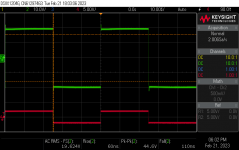 J113 lrg sig no comp.png10.7 KB · Views: 167
J113 lrg sig no comp.png10.7 KB · Views: 167 -
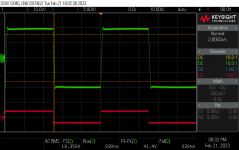 J113 lrg sig 44pF DP.png11.2 KB · Views: 165
J113 lrg sig 44pF DP.png11.2 KB · Views: 165 -
 J113 freq resp - 44pF DP.png10.7 KB · Views: 164
J113 freq resp - 44pF DP.png10.7 KB · Views: 164 -
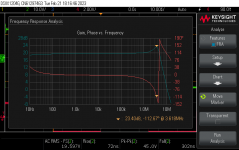 J113 closed fr no comp.png10.5 KB · Views: 158
J113 closed fr no comp.png10.5 KB · Views: 158 -
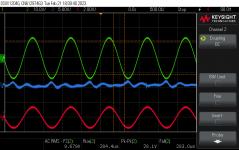 J113 10Vout no comp THD.png18.6 KB · Views: 158
J113 10Vout no comp THD.png18.6 KB · Views: 158 -
 J111 lrg sig no comp.png11.4 KB · Views: 172
J111 lrg sig no comp.png11.4 KB · Views: 172 -
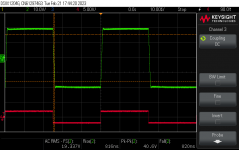 J111 lrg sig 44pF DP.png11 KB · Views: 158
J111 lrg sig 44pF DP.png11 KB · Views: 158 -
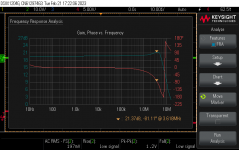 J111 freq resp - no comp.png9.9 KB · Views: 159
J111 freq resp - no comp.png9.9 KB · Views: 159 -
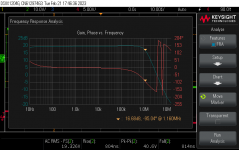 J111 freq resp - 44pF DP .png10.7 KB · Views: 143
J111 freq resp - 44pF DP .png10.7 KB · Views: 143 -
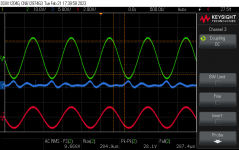 J111 10Vout no comp THD.png18.4 KB · Views: 165
J111 10Vout no comp THD.png18.4 KB · Views: 165
For the other two parts:
Attachments
-
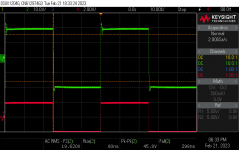 JFE2140 lrg sig no comp.png10.4 KB · Views: 131
JFE2140 lrg sig no comp.png10.4 KB · Views: 131 -
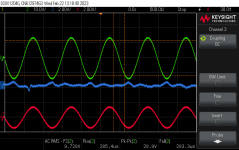 LSK170 10V out dist.png18.5 KB · Views: 140
LSK170 10V out dist.png18.5 KB · Views: 140 -
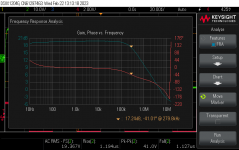 LSK170 FR - 5pF.png10.8 KB · Views: 144
LSK170 FR - 5pF.png10.8 KB · Views: 144 -
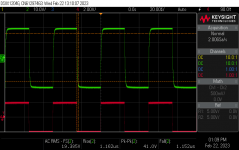 LSK170 lg sig - 5 pF fb.png11.8 KB · Views: 141
LSK170 lg sig - 5 pF fb.png11.8 KB · Views: 141 -
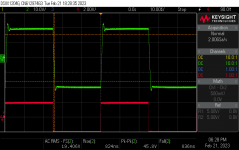 JFE2140 lrg sig 44pF DP.png10.9 KB · Views: 136
JFE2140 lrg sig 44pF DP.png10.9 KB · Views: 136 -
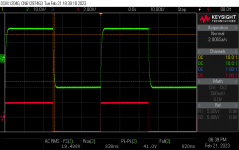 JFE2140 lrg sig 5pF feedback.png10.6 KB · Views: 136
JFE2140 lrg sig 5pF feedback.png10.6 KB · Views: 136 -
 JFE2140 freq resp - no comp.png9.7 KB · Views: 141
JFE2140 freq resp - no comp.png9.7 KB · Views: 141 -
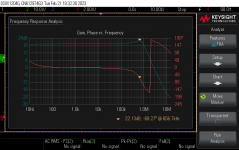 JFE2140 freq resp - 44pF DP.png9.9 KB · Views: 133
JFE2140 freq resp - 44pF DP.png9.9 KB · Views: 133 -
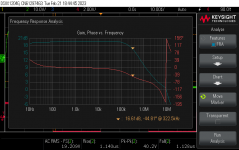 JFE2140 freq resp - 5pF feedback.png10.8 KB · Views: 137
JFE2140 freq resp - 5pF feedback.png10.8 KB · Views: 137 -
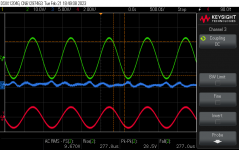 JFE2140 10Vout 5pF comp THD.png17.8 KB · Views: 147
JFE2140 10Vout 5pF comp THD.png17.8 KB · Views: 147
ZM said (something like) "it should be required to learn to use soundcard for distortion,
for entrance to papaland" best I remember....
So Ok here is proof I tried....
found a How to thread by xrk971
May be useless but seems to correlate to what I hear and other plots.
Done on Linux Mint 21 with X-fi usb card
2022 ft end with follower
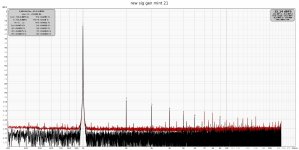
for entrance to papaland" best I remember....
So Ok here is proof I tried....
found a How to thread by xrk971
May be useless but seems to correlate to what I hear and other plots.
Done on Linux Mint 21 with X-fi usb card
2022 ft end with follower

The DIY Front End 2022 essentials kit is now available for purchase from the store. Thank you Nelson!
Jason, too bad the deal won't work in EU: for $20 of valuables, we are charged $80 in VAT, handling and yes, also shipping.
I'm very about that - shipping to NL with the cheaper carriers has proven extremely tough - the last mile delivery via PostNL or other couriers highly unreliable.
Unfortunately we offer "DHL Express Delivered Duties Paid" as the only option to a couple of countries in the EU, specifically UK, NL and RO. This is due to too many failed deliveries using cheaper methods such as DHL eCommerce which uses local carriers to do the last mile delivery. PostNL seemed to be particularly bad at managing to take delivery from DHL eCommerce at the border and then get it into customers' hands. We had too many unhappy customers in NL and UK with failed, lost and returned deliveries. So now we only offer DHL Express to those countries. While it may be expensive, you know you will get what you ordered.
If you have a friend in a neighbouring country you might consider getting it delivered there, using one of the cheaper DHL eCommerce methods available to those countries.
For the time being, for UK, NL and RO we only offer DHL Express, which does actually get there every time and is extremely reliable (and unfortunately expensive).
In regards to DHL Express duties and taxes pricing itself, this month after conducting an audit we found out we were massively underquoting the duties and taxes for DHL Express and have had to revise those duties charges up so that we are no longer losing money on every shipment, which we have been for the past few months. DHL Express also raised their base shipping prices in 2023, their fuel surcharge, residential delivery fees and customs processing fees across the board. And being "small fry" we got hit with a tier change as well on our pricing, so we have had to transparently increase our rates for those so we aren't losing money on each shipment (which we were).
We have never made any money on shipping, duties or handling and have always charged transparently whatever carriers charge us. With duty calculation we need to best guess what we will eventually be charged. We're left to hold the bag if we make a mistake. As essentially a micro business when it comes to international shipping and a relatively low monthly spend with them, we don't have much negotiating power. We could stop all other shipping methods and force everyone to use DHL Express to try to get higher tier rate pricing, or just keep offering DHL Express and transparently charging whatever they are charging us. Tough choice, at the moment we're opting for the latter.
Unfortunately we offer "DHL Express Delivered Duties Paid" as the only option to a couple of countries in the EU, specifically UK, NL and RO. This is due to too many failed deliveries using cheaper methods such as DHL eCommerce which uses local carriers to do the last mile delivery. PostNL seemed to be particularly bad at managing to take delivery from DHL eCommerce at the border and then get it into customers' hands. We had too many unhappy customers in NL and UK with failed, lost and returned deliveries. So now we only offer DHL Express to those countries. While it may be expensive, you know you will get what you ordered.
If you have a friend in a neighbouring country you might consider getting it delivered there, using one of the cheaper DHL eCommerce methods available to those countries.
For the time being, for UK, NL and RO we only offer DHL Express, which does actually get there every time and is extremely reliable (and unfortunately expensive).
In regards to DHL Express duties and taxes pricing itself, this month after conducting an audit we found out we were massively underquoting the duties and taxes for DHL Express and have had to revise those duties charges up so that we are no longer losing money on every shipment, which we have been for the past few months. DHL Express also raised their base shipping prices in 2023, their fuel surcharge, residential delivery fees and customs processing fees across the board. And being "small fry" we got hit with a tier change as well on our pricing, so we have had to transparently increase our rates for those so we aren't losing money on each shipment (which we were).
We have never made any money on shipping, duties or handling and have always charged transparently whatever carriers charge us. With duty calculation we need to best guess what we will eventually be charged. We're left to hold the bag if we make a mistake. As essentially a micro business when it comes to international shipping and a relatively low monthly spend with them, we don't have much negotiating power. We could stop all other shipping methods and force everyone to use DHL Express to try to get higher tier rate pricing, or just keep offering DHL Express and transparently charging whatever they are charging us. Tough choice, at the moment we're opting for the latter.
- Home
- Amplifiers
- Pass Labs
- DIY Front End 2022
